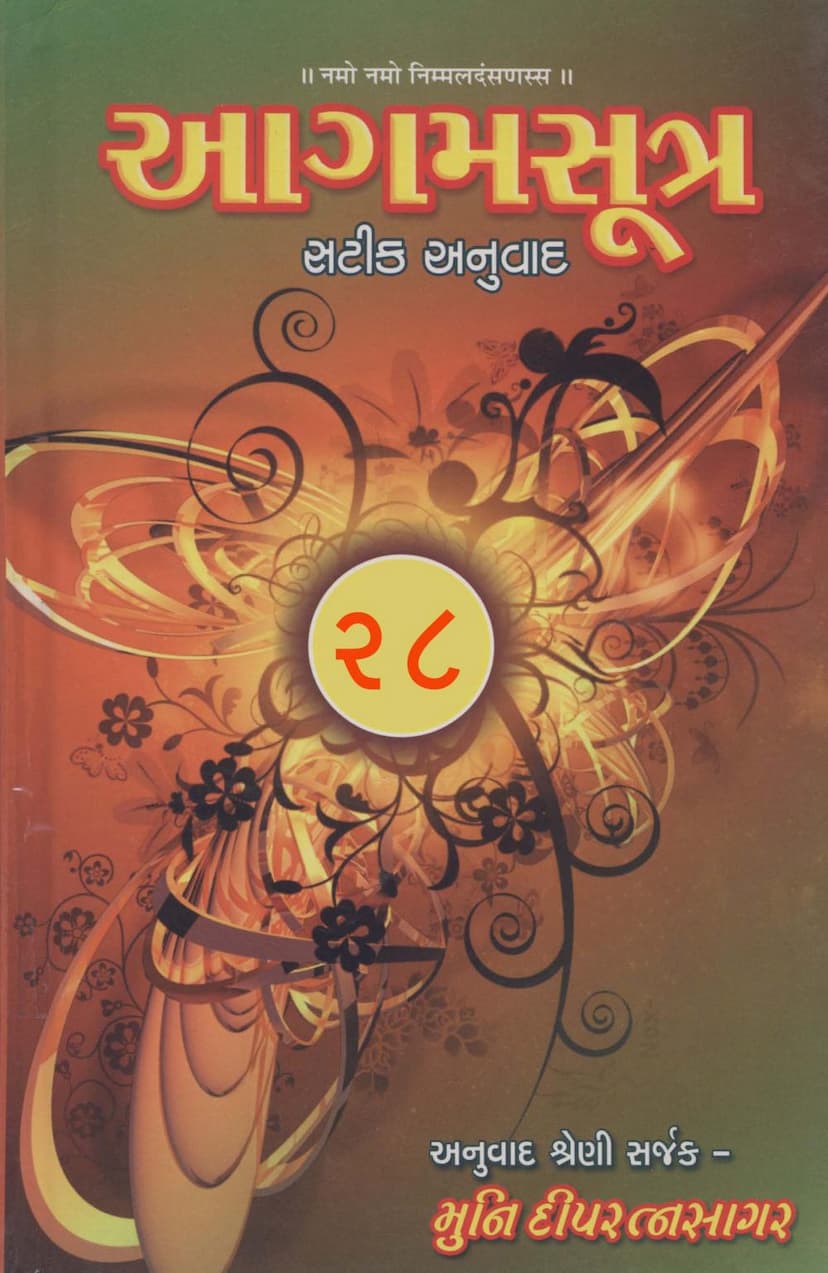Agam 20 Kalpavatansika Sutra Satik Gujarati Anuvad
Added to library: September 1, 2025

Summary
This document is Volume 28 of a series titled "Agam Sutra Satik Gujarati Anuvad" (Agam Sutra with Commentary and Gujarati Translation), created by Muni Deepratnasagar. This particular volume focuses on the Kalpavartansika Sutra, an Upanga Sutra of Jainism.
Here's a breakdown of the key information:
Book Title: Agam 20 Kalpavatansika Sutra Satik Gujarati Anuvad Author: Dipratnasagar, Deepratnasagar Publisher: Deepratnasagar Volume: 28
Content Focus:
- Kalpavartansika Sutra: This volume provides a Gujarati translation and commentary of the Kalpavartansika Sutra.
- Upanga Sutras: The Kalpavartansika Sutra is identified as the 9th Upanga Sutra in the Jain canon.
- Nirayavalika Panchak and Payannasutras: This volume is part of a larger series that covers the "Nirayavalika Panchak" (five Upanga Sutras: Nirayavalika, Kalpavartansika, Pushpika, Pushpachulika, Vrishnidasana) and ten (plus one optional) "Payannasutras". This volume specifically covers the Kalpavartansika Sutra, which falls within this classification.
- Structure: The Kalpavartansika Sutra is divided into ten "Adhyayanas" (chapters).
Summary of the Translated Text (Kalpavartansika Sutra, Adhyayana 1-5):
The text details the teachings of Bhagwan Mahavir through conversations with his chief disciple, Gautam Swami. The core narrative revolves around the stories and destinies of individuals who become celestial beings (Devas) in various heavens after a life of religious practice, and their subsequent reincarnation and eventual liberation.
- Chapter 1: Introduces the city of Champa, the Purnabhadra Chaitya, King Konika, and Queen Padmavati. It then focuses on Queen Kali and her son, Kal. Kal's son is named Padm, who, after experiencing a dream of a lion, eventually renounces worldly life and becomes an ascetic. He studies under Bhagwan Mahavir, practices severe austerities, and ultimately attains salvation through a specific type of fasting called padopagaman. After his death, he is reborn as a celestial being in the first heaven (Soudharma Kalpa) for a lifespan of two Sagaropamas.
- Chapter 2: Similar to the first, it describes the city, deities, and lineage, focusing on Queen Sukali and her son, Sukal. Sukal's son is Mahapada, who also experiences a dream and eventually becomes a celestial being in the Ishana Kalpa.
- Chapter 3-5: These chapters continue the pattern, detailing the lives and rebirths of individuals from subsequent generations and their ascensions to different heavens (Sankumara, Mahendra, Brahmaloka, etc.) with varying lifespans.
- Subsequent Chapters (6-10 - alluded to in the text): The text states that the remaining chapters continue this narrative style, detailing the reincarnations and lifespans of individuals from further generations, ultimately leading them to various heavens and eventual liberation in Mahavideh Kshetra.
Key Themes and Concepts:
- Karma and Reincarnation: The stories illustrate the Jain principle of karma, where actions in this life determine one's future rebirths, including the realm of celestial beings.
- Asceticism and Liberation: The text emphasizes the importance of renunciation, ascetic practices, and devotion to a spiritual teacher (Bhagwan Mahavir) as pathways to liberation (moksha).
- Celestial Beings (Devas): It describes the existence and lifespans of Devas in different heavens, highlighting that even these beings are subject to the cycle of birth, death, and rebirth until they achieve ultimate liberation.
- Spiritual Progression: The narratives follow a pattern of worldly life, spiritual seeking, attainment of higher states of existence, and eventual liberation.
Publication Details:
The document also includes acknowledgments and lists of financial supporters for the entire series of "Agam Sutra Satik Gujarati Anuvad," highlighting the collaborative effort behind this extensive publication project. It also lists other publications by Muni Deepratnasagar, covering various aspects of Jain literature, including original texts, translations, dictionaries, and ritualistic works.
In essence, Volume 28 of this series offers a detailed Gujarati translation and commentary of the Kalpavartansika Sutra, providing insights into Jain cosmology, karma, and the path to spiritual liberation through narratives of transmigration and ascetic practice.